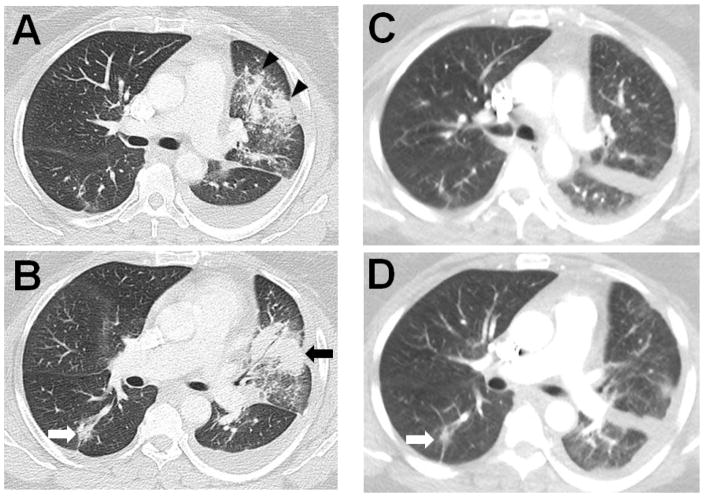Figure 4.
A and B Computed tomography (CT) of the chest prior to cabozantinib therapy demonstrated a dominant mass in the left upper lobe (B, black arrow), measuring 4.3 cm in the longest diameter with patchy opacities (A, arrowheads) and a 1.7 cm discrete nodule in the right lower lobe (B, white arrow). Note bilateral small pleural effusions. C and D: On a chest CT scan performed due to dyspnea 4 weeks after the initiation of cabozantinib therapy, the the dominant lesion and surrounding tumor burden in the left upper lobe has mostly resolved with minimal residual opacities (C), indicating marked response to therapy. The right lower lobe lesion has also decreased, measuring 1.4 cm (arrow, D). Bilateral segmental pulmonary emboli are also noted (not shown), accounting for the clinical symptoms.

